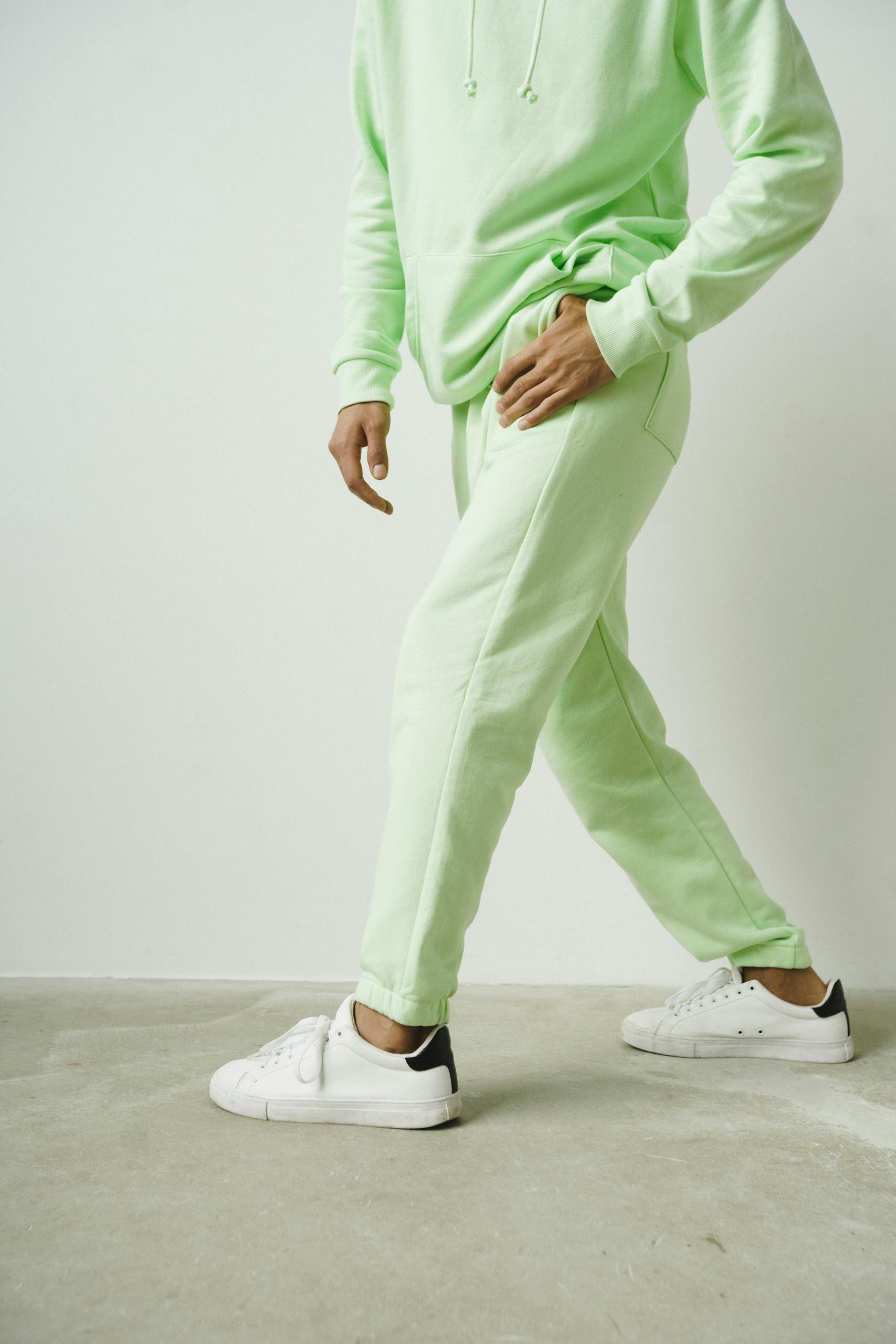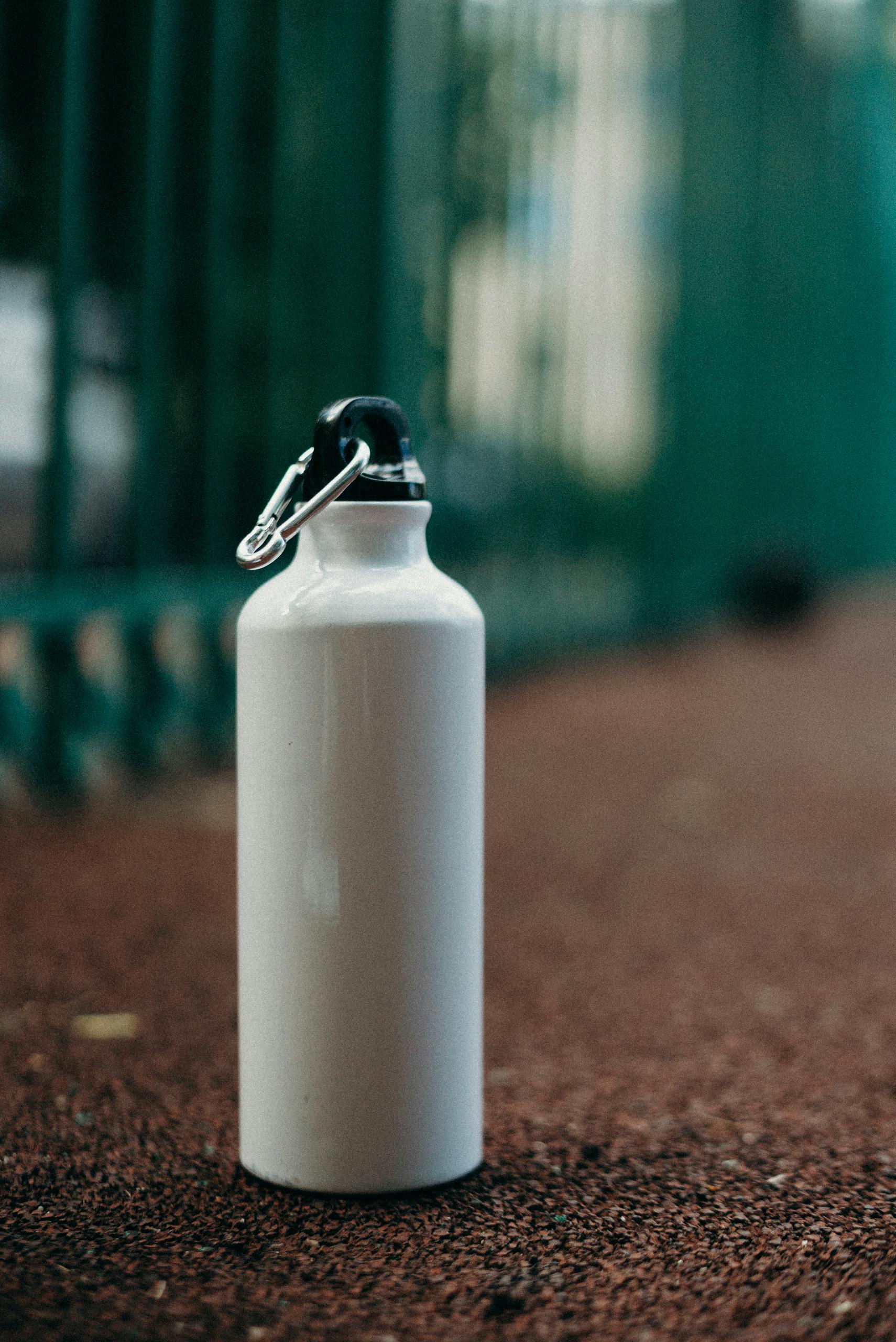When it comes to comfort and style, sweatpants are a popular choice for many. They can be made from various fabrics that provide different benefits. Sweatpants are commonly made from cotton, polyester, fleece, and spandex, offering comfort, durability, and flexibility.
Cotton sweatpants are breathable and soft, making them ideal for everyday wear. They allow your skin to breathe, which can be beneficial during exercise. Polyester and spandex blends offer extra stretch and durability, perfect for more active use. Fleece sweatpants keep you warm in colder weather, making them a great winter staple.
In addition to the traditional materials, some sweatpants use sustainable fabrics like bamboo, rayon, and even wool to reduce environmental impact. These options provide versatility and can suit various activities, whether you’re lounging at home or heading out for a casual outing. Understanding the different fabric options can help you choose the best pair for your needs.
Materials and Comfort
Sweatpants come in a variety of materials, each offering different levels of comfort, flexibility, and warmth. Understanding these materials helps you choose the best pair for your needs.
Cotton and Its Benefits
Cotton is a popular material for sweatpants because it is soft and breathable. It allows air to circulate, keeping you cool and comfortable. Cotton fabric is also lightweight, which makes it great for lounging or casual wear.
One key benefit of cotton is its moisture-wicking ability. It absorbs sweat, helping you stay dry during physical activities. Additionally, cotton is hypoallergenic, which means it is less likely to irritate sensitive skin.
Overall, cotton sweatpants are a comfortable and practical choice for everyday wear.
Polyester and Durability
Polyester is known for its durability and resistance to shrinking. This synthetic fiber holds its shape well and can withstand frequent washing. Polyester sweatpants are less likely to wrinkle, making them low-maintenance.
Despite being a synthetic material, polyester offers good breathability. It does not absorb moisture as well as cotton, but it dries quickly. This makes polyester ideal for athletic wear.
Polyester blends, combining polyester with cotton or spandex, balance comfort and durability. These blends offer flexibility and stretch, perfect for active use.
Fleece for Warmth
Fleece sweatpants are designed to provide extra warmth. This material is often used during colder months. Fleece is a synthetic fabric made from polyester, featuring a soft, fuzzy texture.
The insulating properties of fleece make it excellent for retaining body heat. Despite being warm, fleece is lightweight and does not feel heavy.
Fleece also has moisture-wicking properties. It draws sweat away from your body, keeping you dry and comfortable. This material is a top choice for loungewear and outdoor activities in cold weather.
Synthetic Fibers and Flexibility
Synthetic fibers like spandex and nylon add flexibility and stretch to sweatpants. Spandex, also known as Lycra, is highly elastic, allowing for a full range of motion. This makes spandex-blend sweatpants ideal for workouts and sports.
Nylon is another synthetic material that offers durability and water resistance. It is lightweight and smooth to the touch, enhancing comfort.
Sweatpants made with synthetic fibers often combine several materials. These blends provide both flexibility and structure, ideal for active lifestyles.
Natural Fibers: Bamboo and Beyond
Bamboo is an eco-friendly material becoming popular for sweatpants. It is a natural fiber known for its softness and breathability. Bamboo fabric also has moisture-wicking properties, keeping you dry.
Bamboo is naturally antibacterial, which helps reduce odors. This makes bamboo sweatpants suitable for prolonged wear and physical activities.
Other natural fibers like wool and Modal are also used in sweatpants. Wool offers warmth and moisture-wicking properties, while Modal, made from beech tree pulp, provides a soft, silky feel.
Natural fibers are often sustainable, making them an excellent choice for environmentally-conscious consumers.
Design and Functionality
Sweatpants are popular for their comfort and versatility. Key design elements include the waistband, pockets, and ankle cuffs, each contributing to the overall functionality and style.
Elastic and Drawstring Waistband
The waistband is crucial for keeping sweatpants secure and comfortable. Elastic waist sweatpants are popular due to their ease of use and flexibility. The elastic allows sweatpants to stretch and fit various waist sizes, ensuring comfort during different activities.
In addition to elastic, many sweatpants feature a drawstring. This drawstring adds extra adjustability, allowing you to tighten or loosen the fit according to your preference. This combination of elastic and drawstring makes sweatpants versatile, keeping them secure during workouts while still being comfortable for lounging.
Pocket Variations
Pockets are essential for practicality. Pocketed sweatpants often have side pockets, which are convenient for everyday items like keys, phones, and wallets. Some may include back pockets or even zippered pockets to keep belongings safe and secure during activities.
Joggers, a popular style of sweatpants, frequently feature multiple pocket types, combining functionality with a trendy look. The design of these pockets ensures that you have enough space to carry your essentials while maintaining a stylish appearance. Thoughtful pocket design enhances both the utility and appearance of sweatpants.
Ankle Fit and Cuff Design
Ankle cuffs are another important aspect of sweatpants design. Elastic cuff sweatpants feature tight ankle cuffs, which prevent the pants from dragging on the ground and provide a snug fit. This design is especially popular in joggers, giving them a neat and fashionable look.
Other sweatpants may have loose, open ankles without cuffs, offering a more relaxed fit. These are often chosen for their comfort and ease of movement, making them ideal for lounging or low-impact activities. The choice between cuffed and uncuffed ankles can significantly affect how the sweatpants function and look on you.
Style and Fashion
Sweatpants have evolved in both style and function. They are no longer just for lounging at home but have become a staple in athleisure and casual wear. Here’s how you can incorporate sweatpants into your wardrobe.
Classic and Trendy Sweatpants
Classic sweatpants usually have a relaxed fit, elastic waistbands, and cuffs. They come in basic colors like gray, black, and navy.
Trendy sweatpants feature tapered legs and stylish designs. They often have unique details like side stripes, logos, or patches. Trendy sweats come in various colors and patterns, making them versatile for different fashion statements.
Both styles can offer comfort and flexibility, suitable for different settings from a workout session to a casual day out.
Athleisure and Casual Use
Athleisure sweatpants are designed for both athletic activities and casual outings. They use breathable and moisture-wicking fabrics like polyester and spandex.
These pants seamlessly transition from the gym to errands or even a casual meet-up. You can find them in sleek designs that look good whether you’re working out or just hanging out.
Casual sweatpants, usually made from materials like cotton or fleece, are perfect for a relaxed look. They are excellent for lounging at home or simple, comfy errands. Just pair them with a T-shirt or hoodie for a laid-back vibe.
Pairing with Footwear
When it comes to footwear, sweatpants are versatile. Sneakers are a popular choice, especially for a sporty look. They can be worn with both classic and trendy sweatpants.
Flats are another good option, offering a more polished but still comfortable look. They pair well with both tapered and relaxed styles, making them suitable for casual outings.
Boots, especially ankle boots or combat boots, can elevate your outfit. They offer a fashionable edge, particularly when paired with trendy sweatpants. Whether tucked in or cuffed at the ankle, boots can make a bold statement.
Types of Sweatpants
Sweatpants come in various styles to suit different needs, from lounging at home to athletic activities. You can choose from basic length, capri pants, baggy, or fitted styles, and even specialized activewear varieties.
Basic Length and Capri Pants
Basic length sweatpants usually reach down to your ankles, providing full coverage and warmth. These are ideal for casual wear or mild workouts. They are commonly made from cotton, polyester, or a blend of fabrics for comfort and durability.
Capri pants, or cropped sweatpants, end at mid-calf. They offer a cooler, more breathable option, making them suitable for warmer weather or intense workouts. Despite being shorter, they can be just as stylish and versatile as full-length options.
Baggy vs Fitted Sweatpants
Baggy sweatpants offer a loose, relaxed fit, which makes them great for lounging or casual activities. These are often made from cotton fleece or plush fabrics for extra comfort. The loose fit doesn’t restrict your movements, making them ideal for easy-going days.
Fitted sweatpants, or joggers, have a more tailored fit. They taper down towards the ankles and often have elastic cuffs. These provide a sleek look and are suitable for both workouts and casual wear. Materials like spandex blends add flexibility and comfort, making them ideal for more active pursuits.
Specialized Activewear Varieties
For those who need sweatpants for specific sports or fitness activities, specialized activewear varieties offer features tailored to performance. Look for materials like moisture-wicking polyester or nylon blends that help keep you dry and comfortable.
Jogging pants and leggings fall into this category. Jogging pants are often lighter and more breathable, suitable for running. Leggings offer a snug fit and are great for yoga or other activities requiring flexibility. Specialized sweatpants often include pockets, reinforced stitching, and breathability features, ensuring they meet the demands of various physical activities.
Practical Aspects
When choosing sweatpants, consider the importance of comfort, flexibility, performance during workouts, and how easy they are to care for. These factors play a crucial role in your daily life and activities.
Comfort and Range of Motion
Sweatpants made from cotton, polyester, and spandex blends offer a balance of softness and flexibility. Cotton provides a soft, breathable feel, while polyester adds durability. Adding spandex ensures stretchiness, giving you freedom of movement. These materials together make sure your sweatpants are comfortable whether you’re lounging or on the go.
Fleece and French terry are popular for colder weather due to their insulating properties. They keep you warm without compromising flexibility. The fluffy texture of fleece, in particular, is cozy and soft against your skin.
Suitability for Workouts and Athletes
For workouts, materials like polyester and spandex are ideal because they offer moisture-wicking and quick-drying properties. Polyester helps keep sweat off your skin, ensuring you stay dry and comfortable during intense activities. Spandex adds the necessary stretch to accommodate various movements and exercises.
Some sweatpants are designed with athletes in mind and come with specialized fabrics that enhance performance. These may include reinforced seams for durability and mesh panels for additional breathability. Elastic waistbands and drawstrings are also common features, ensuring a secure and customizable fit.
Care and Maintenance
Proper care is important to maintain the quality and longevity of your sweatpants. Cotton blends might shrink if washed in hot water or tumble-dried on high heat. To avoid this, wash them in cold water and line dry or use a low heat setting on your dryer. Polyester and spandex blends are typically more resilient but still benefit from gentle washing cycles.
To keep moisture-wicking properties intact, avoid using fabric softeners, which can leave residue and reduce effectiveness. Check the care label for specific instructions related to your sweatpants, as different blends may have particular washing and drying preferences. Following these care tips ensures that your sweatpants remain comfortable and durable.
Sweatpants in History
Sweatpants have a rich history, beginning as practical athletic wear and evolving into a staple of casual fashion.
The Evolution of Sweatpants
In the 1920s, Émile Camuset, the founder of Le Coq Sportif, created the first pair of sweatpants. These were simple gray knitted jersey pants designed for athletes to stretch and run comfortably. By the 1930s, sweatpants became a common sight at the Olympic Games, favored by many athletes.
Sweatpants evolved over the years, becoming more stylish and varied in design. They transitioned from purely athletic wear to everyday casual clothing. Features like drawstrings at the waist and cuffs were introduced to enhance comfort and functionality. Today, sweatpants come in various materials, cuts, and colors, catering to different style preferences and activities.
Iconic Brands and Influences
Many brands played a significant role in popularizing sweatpants. Adidas introduced tracksuits that combined sweatpants with matching tops, boosting their appeal. Nike and Puma followed suit, offering innovative designs and materials.
Other brands known for their sweatpants include Champion and Reebok. These companies added features like moisture-wicking fabrics and more tailored fits. Over time, sweatpants also found their place in high fashion, with designers like Karl Lagerfeld incorporating them into their collections.
Sweatpants have transcended their humble beginnings, becoming a symbol of comfort and style recognized worldwide.
Market Trends and Consumer Preferences
The market for sweatpants is evolving with changing consumer preferences. People now seek comfort and style, both at home and in fashion.
Sportswear Influence
Fitness trends have pushed many to look for sweatpants fit for exercise and casual wear. These pants must be breathable and stretchy.
Sustainable Choices
Consumers are more aware of sustainability. Brands using recycled materials or organic cotton are growing in popularity.
Smart Textiles
Innovations like moisture-wicking and temperature-regulating fabrics are becoming common. These features appeal to those prioritizing health and fitness.
Home Comforts
With more people working from home, the demand for comfortable loungewear has risen. Sweatpants are a preferred choice.
Online Shopping
The shift towards online shopping impacts how people buy sweatpants. Consumers now look for detailed product information and customer reviews before making a purchase.
Personalization
Personalized sweatpants, with monograms or custom designs, are appealing to a growing segment of the market.
Fashion Trends
Trendy designs, colors, and cuts influence consumer choices. Many look for sweatpants that can be worn out of the house, blending comfort with fashion.
Innovations and Sustainability
Recent advancements in sweatpants focus on improving moisture-wicking properties and incorporating eco-friendly materials. These innovations aim to enhance both comfort and environmental responsibility.
Developments in Moisture Wicking and Breathability
High-performance sweatpants now often use synthetic fibers like polyester and polypropylene for better moisture-wicking. These materials pull sweat away from your skin to keep you dry and reduce discomfort.
Some brands integrate fleece fabric for its softness and warmth, coupled with moisture-wicking properties. Additionally, meshes and microfibers improve breathability without sacrificing warmth. Specialized fabrics offer a balance of moisture management and airflow, making sweatpants suitable for various activities.
Eco-friendly Materials and Practices
The move towards sustainability has led to the use of natural fibers and recycled materials. Fabrics like bamboo, organic cotton, and wool are being mixed with synthetic fibers to create blends that are both durable and environmentally friendly.
Innovative materials like Circulose are emerging. Circulose is made from discarded clothes and transformed into new fibers. Brands like H&M and Levi’s have already adopted this material. Drawstrings and other components are also being made from recycled or biodegradable materials to reduce waste further.
Frequently Asked Questions
Sweatpants are created from various materials, each offering unique benefits such as comfort, durability, and moisture management. This section addresses common questions about the materials used in sweatpants.
What are the common fabrics used to make sweatpants?
Common fabrics for sweatpants include cotton, polyester, fleece, and spandex. Cotton offers softness and breathability, while polyester provides moisture-wicking properties. Fleece is warm and cozy, often made from polyester.
Is there a difference between men’s and women’s sweatpants material?
Generally, there isn’t a big difference between the materials used for men’s and women’s sweatpants. Both often use the same fabrics like cotton and polyester. The main differences lie in the cut, fit, and style rather than the material.
Which fabric is best for breathability and comfort in sweatpants?
Cotton is typically best for breathability and comfort. It allows air to circulate and feels soft against the skin. For activities that require moisture management, a blend of cotton and polyester can be beneficial.
Are most sweatpants made from a blend of materials?
Yes, many sweatpants are made from a blend of materials. Blending fabrics like cotton and polyester can combine the benefits of both, such as softness and moisture-wicking. Sometimes spandex is added for extra stretch and flexibility.
What are the benefits of synthetic materials in sweatpants fabrication?
Synthetic materials like polyester offer several benefits. They are durable, resistant to shrinking, and effective at wicking away moisture, making them ideal for athletic wear. Fleece, another synthetic material, provides excellent warmth and insulation.
Which is more prevalent in sweatpant manufacturing, cotton or polyester?
Both cotton and polyester are prevalent, but their usage often depends on the intended use of the sweatpants. Cotton is popular for casual, everyday wear due to its comfort. Polyester is frequently used in athletic sweatpants for its moisture-wicking and quick-drying properties.



